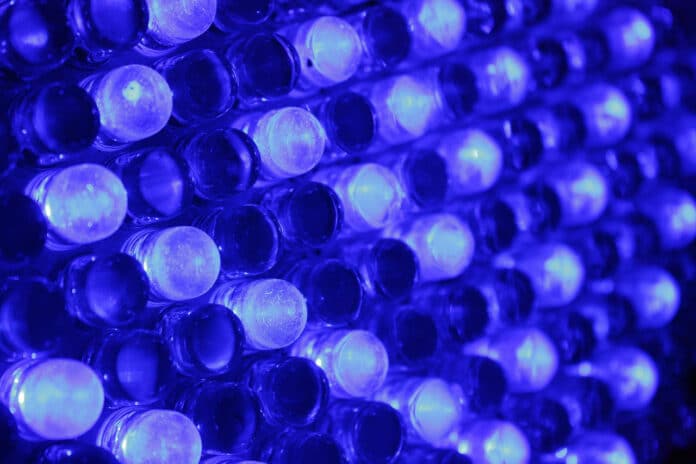The best lighting source is LED. Due to their low cost and high energy efficiency since their creation, they have grown in popularity. A semiconductor called an LED produces light when electricity passes through it. Through the recombination of electrons and holes (carriers), it produces photons and releases energy in the form of photons. The photon’s energy is reflected in the color of the light emitted.
InGaN-based blue LEDs enable bright and energy-saving white lighting. Transitioning to solid-state lighting sources has significantly reduced energy needs and greenhouse gas emissions. Still, continual efficiency improvements are necessary to hit energy savings goals in the long term.
Blue light-emitting diodes (LEDs) based on indium gallium nitride (InGaN) are frequently thought to have an absolute internal quantum efficiency (IQE) of 100% at low temperatures. The IQE of an LED can be as low as 27.5%, according to a recent study from the University of Illinois Urbana-Champaign Electrical and Computer Engineering experts, proving that the notion that IQE is always flawless is incorrect.
The study has reported a method to reveal low temperature absolute internal quantum efficiency of an InGaN-based light-emitting diode (LED). Scientists coupled structural and optical properties of InGaN-based blue LEDs with a channel-based recombination model. The model reveals the low temperature absolute internal quantum efficiency of the LED on traditional sapphire and emerging Si (111) substrates as 27.5% and 71.1%, respectively.
Graduate student Yu-Chieh Chiu asserts, “To explain these unexpected results that the channel-based recombination model is one of the ways to think about what happens inside the active layer of the LED and how recombination in one channel affects another channel. A channel is a pathway that a carrier may take to recombine radiatively or nonradiatively.”
“To determine the efficiency of the blue LED, usually only the blue emission is considered. But that ignores the effects of everything else happening inside the device, specifically the non-radiative and defect luminescence channels. Our approach is to get a more holistic view of the device and determine, if there is recombination in the blue channel, how is that affected by the second and third channel(s)?”
Bayram stresses that “absolute efficiency is very important to the field so that everyone can build on each other’s knowledge rather than each group improving their efficiency. We need absolute measurements, not just relative measurements.”
Journal Reference:
- Y. C. Chiu, C. Bayram. Low temperature absolute internal quantum efficiency of InGaN-based light-emitting diodes. Applied Physics Letters, 2023; 122 (9): 091101 DOI: 10.1063/5.0142701
